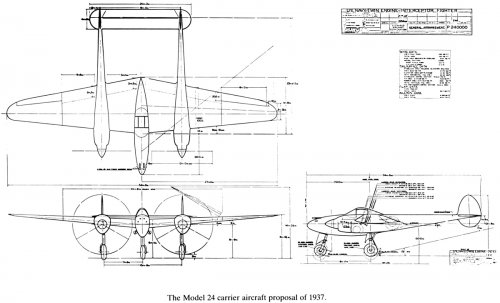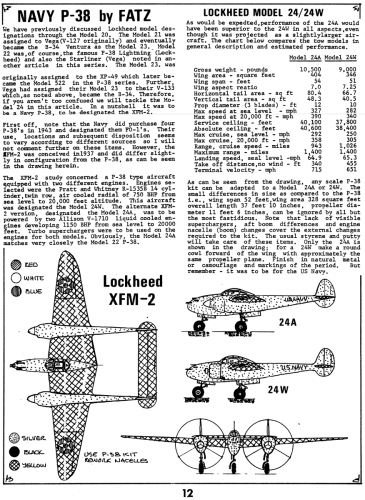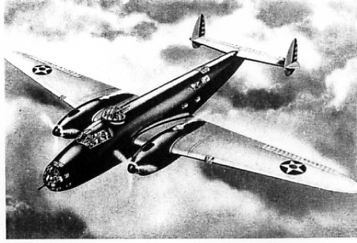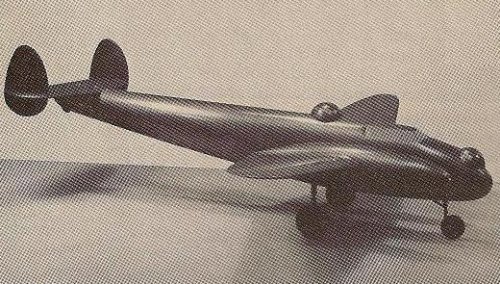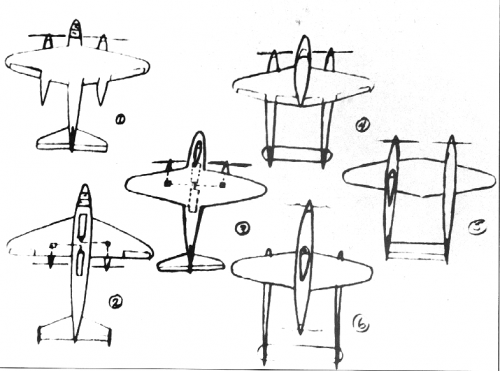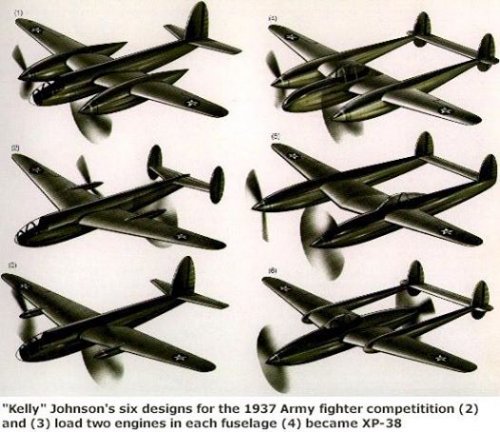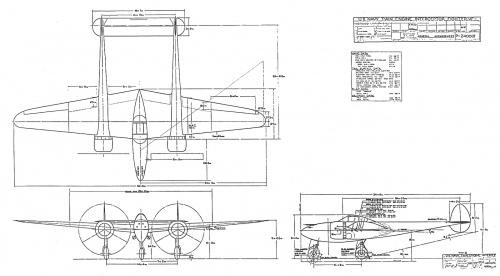Jos Heyman said:
Skyblazer said:
This re-use of the designation "XFM-2" is quite puzzling, considering this was previously assigned to Vega's Model 11 project, quite a different beast.
I agree with Skyblazer. The development of the XFM-2 two seat fighter was commenced in 1937 but was dropped in favour of the P-38 design. The designation XPB-3 has also been linked to this design. I have attached a photo of what has been labelled XPB-3. Looks similar to Skyblazers XFM-2, as I would expect.
I would suggest Bill Slayton's article is somewhat mixed up, which is a pity because it immediately casts a potential doubt over some of the other 'way-out' information he has provided.
The XFM-1 initially was the designation for the winner of the competition for Circular Proposal 604, so to start with Lockheed's design was internally known as XFM-1. The competition was close, and Lockheed's design scored less then 0.4% lower than Bell's proposal. Ben Kelsey, fighter project officer at Wright Field who authored CP 604 and was looking for heavier, more capable twin engined fighter designs, personally thought Lockheed's design approach superior and Wright Field Project Office recommended both designs be put into production, Bell's as XFM-1 and Lockheed's as XFM-2. This was rejected, and only Bell got a contract on May 12, 1936. Kelsey continued to develop his ideas and wanted to give Lockheed another chance.
Lockheed continued some work on XFM(-1/-2) after submission but by March 1936 (2 months prior to losing to Bell) a new "Model 22" supplanted the earlier design number. Early docs also refer to it as Project M-12-36.
6 basic configurations were considered by Johnson and Hibberd (attached). It was likely influenced by advance notice of what later was formally Circular Proposal 608 from Kelsey and Gordon P. Saville at Wright Field. Lockheed was able to respond to CP X-608 issued February 19th 1937 and received a contract to build one XP-38 23rd June 1937. Vultee's rival XP1015 proposal was more conventional and less developed, perhaps due to Lockheed's head start.
Bell's XFM-1 first flew on 1 September 1937 with Kelsey at the helm. Lockheed's XP-38 flew 27th Jan 1939. Kelsey got to be test pilot on that one too. Lucky guy!
If we consider this development timeline it is not unreasonable in 1937 for the Model 22 and derivative designs e.g. Navy Model 24 to be designated "XFM-2" in certain Lockheed documentation in 1937, when viewed either as continuations of the not built XFM-2 or as successors to the XFM-1 in terms of heavy fighter development.
Given Bill Slayton worked at Lockheed with full access to their archives, and the lack of any obvious mistakes in the rest of his research, I would side with this being the correct interpretation.
Sources:
Warren M. Brodie,
P-38 Lightning: The Definitive Story of Lockheed's P-38 Fighter (Widewing Publications, 1991)
Michael O' Leary,
Production Line to Front Line 03: Lockheed P-38 Lightning (Osprey, 1999)
Frederick A. Johnsen,
Warbirdtech 02: Lockheed P-38 Lightning (Speciality Press, 1996)

